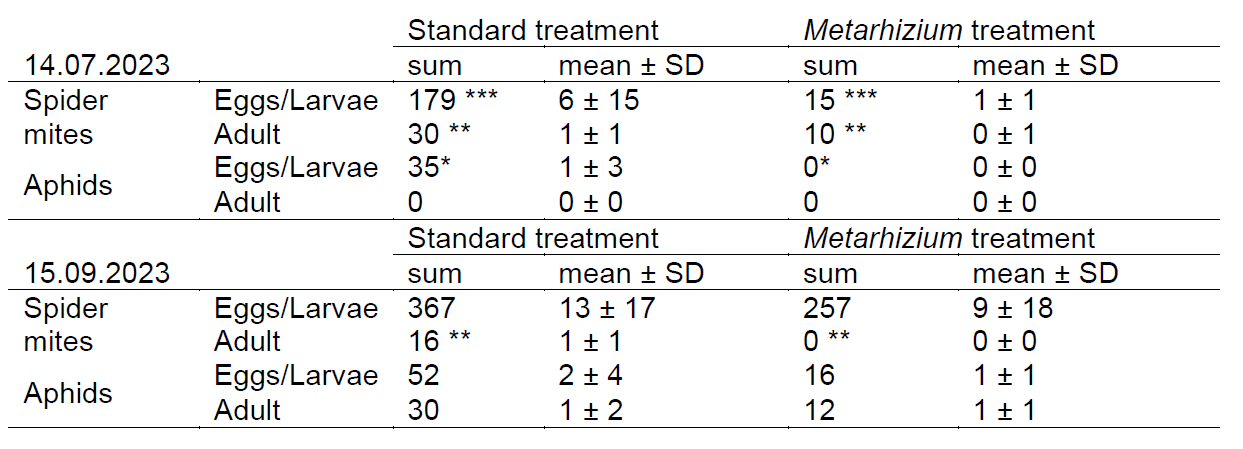In a 3-month trial between 15 June and 15 September 2023, the effectiveness of Metarhizium anisopliae compared to the standard treatment was investigated in two different sectors on remontant strawberry crops under foil tunnels. Despite difficult application conditions due to the high temperatures and low humidity, Metarhizium anisopliae was applied 5 times in the evening hours between 16 June and 8 September. Leaf samples were taken on 14 July and 15 September to determine the aphid and red spider mite population. While the eggs, larvae and adults of the red spider mite still showed a significant difference to the standard treatment during the first sampling period, this was still the case for the adults of the red spider mite at the end of the experiment. Although Metarhizium anisopliae reacts sensitively to high temperatures (from 30 °C), an effect of the treatment could be shown.
Table: Sum, mean and standard deviation of the number of eggs/larvae and adult red spider mites and aphids per standard and Metarhizium treatment. Significantly different values are marked with *: *** = very high significance, ** = high significance, * = significance.

A detailed test report can be downloaded here.
